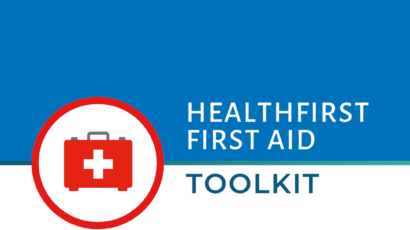Posted by Dr Michelle Wright
With the weather hopefully improving and the summer holidays about to begin for many, Dr Michelle shares an important reminder about the importance of water safety in this week’s Health Matters.
The importance of water safety
I think everyone understands that drowning is when you have difficulty breathing after water gets into your airways.
But today, I wanted to discuss two important terms that people often use: ‘dry drowning’ and ‘secondary drowning’.
In fact, these terms are outdated and aren’t something that healthcare professionals use today. But they are things that I get asked about a lot when delivering first aid training.
‘Dry drowning’ – where does this term come from?
Someone immersed in water may breathe in water, causing their vocal cords to go into spasm and close over. This can shut off their airways, making it difficult to breathe.
The effect is pretty much immediate – the person starts gasping and can’t get oxygen into their body. Because their lungs don’t ‘fill’ with water, this is why people historically called it ‘dry drowning’.
‘Secondary drowning’ – what is the difference?
On the other hand, with so-called ‘secondary drowning’, water does get into the lungs.
Again, this was historically used to describe a situation where a person has generally been rescued from the water. And appears to be OK.
However, whilst in the water, they did inhale a small amount of water. This water then irritates the lining of their lungs and causes fluid to build up. This can lead to a condition called pulmonary oedema. This means their lungs can’t exchange oxygen and carbon dioxide properly and their breathing becomes affected. They can develop coughing or wheezing, chest pain and fatigue, with irritability and confusion as blood oxygen levels drop and the brain doesn’t get enough.
Because of the nature of the physiology involved, it takes time for symptoms to become apparent – perhaps up to 24 hours. And the person can appear to be fine in the meantime – which is why the term ‘secondary drowning’ was coined. But really, what we’re talking about is a person who experiences a worsening of symptoms some time after water exposure.
The good news is that if correctly recognised, these symptoms are usually treatable with oxygen, and drugs to remove the fluid from the lungs.
So, dry drowning and secondary drowning are outdated terms. Just plain ’drowning’ should be used to refer to all breathing difficulties that are related to water incidents.
What to do if someone has run into into difficulty in water?
The advice is, if a person has run into difficulty in water, or has inhaled some water, and they start to show symptoms, get medical attention for them straight away. This may mean calling an ambulance: remember, it’s 144 for an ambulance in Switzerland, or 112 is the Europe-wide emergency services number.
Even if they don’t show symptoms, it may still be worth getting them checked out.
Prevention is always better than cure
Don’t leave children unattended around water. Drowning can happen in any kind of water, even in a bath or small inflatable paddling pool – the water doesn’t need to be deep.
If you have a pool at home, make sure it’s completely fenced if there are young children about. Teach kids poolside and water safety. And teach them to swim and feel comfortable around water early.
For us adults, don’t drink alcohol and then go for a swim, don’t swim if you’re feeling tired, be careful not to swim out of your depth, and beware of currents and reeds.





